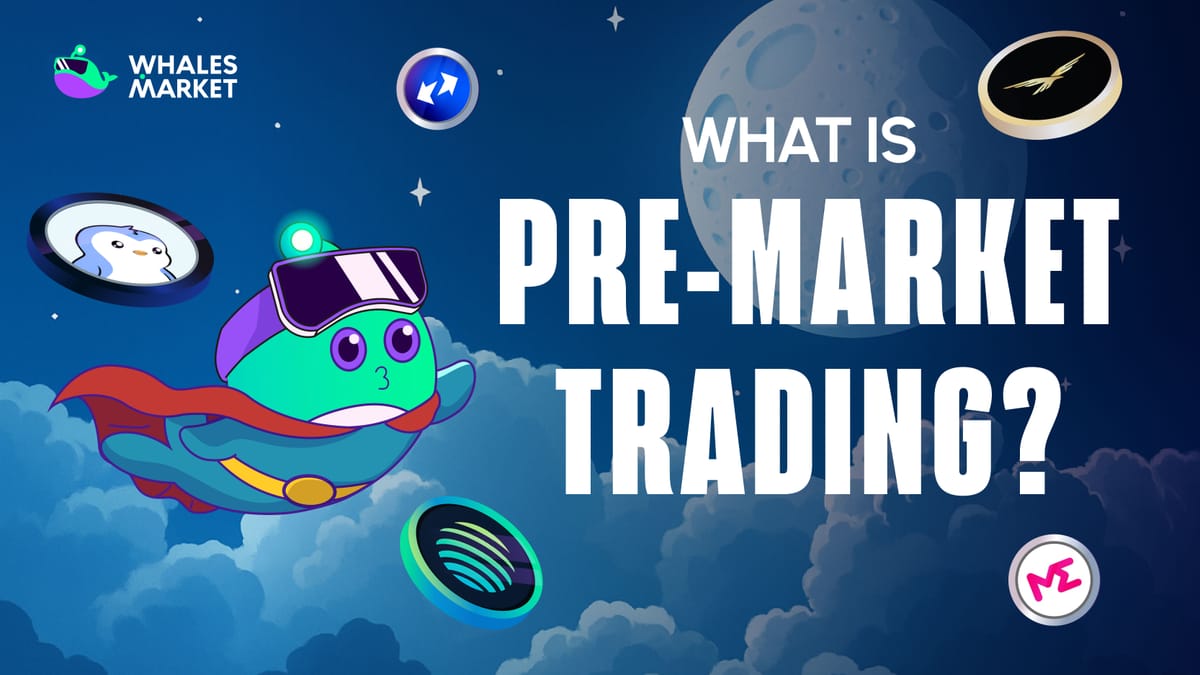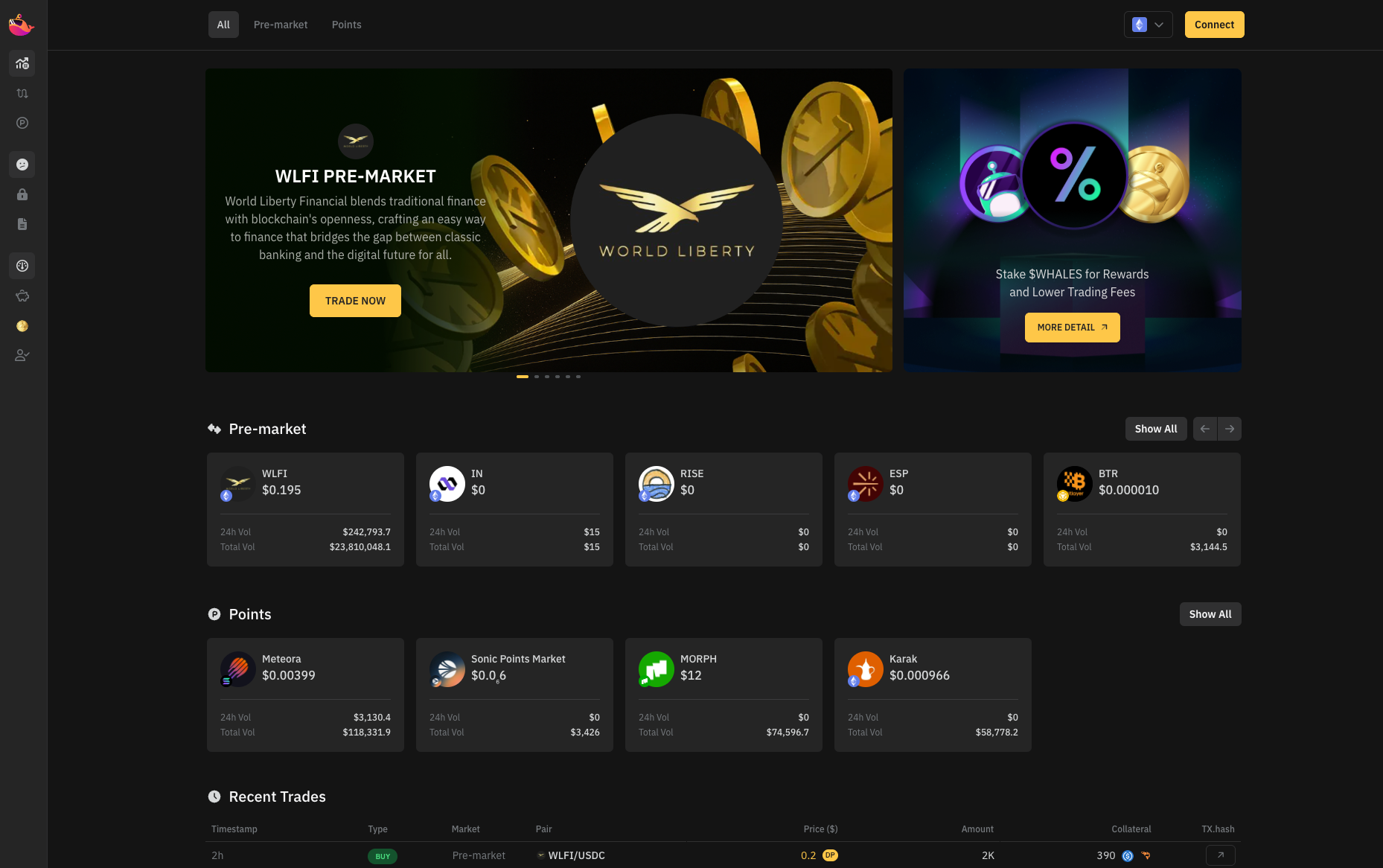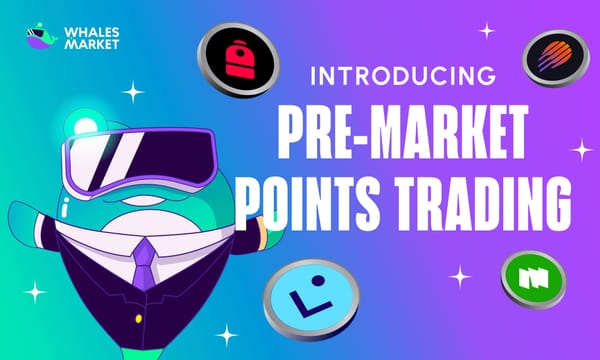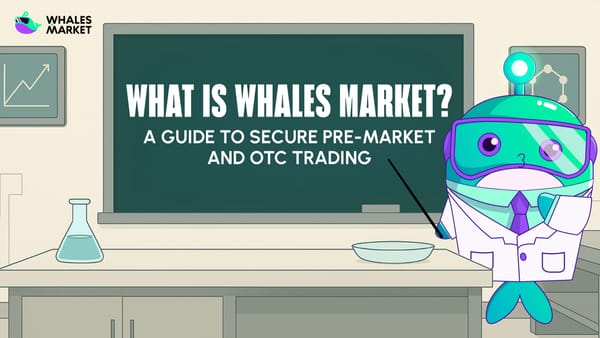What is Pre-Market Trading in Crypto? A Beginner's Guide

Pre-market trading is rapidly becoming a significant area of interest for crypto investors, offering a chance to engage with digital assets before they are publicly available. For newcomers, this landscape can seem complex. This guide breaks down the fundamentals of pre-market trading, its mechanics, benefits, and inherent risks.

The core purpose of this article is to provide a clear and balanced explanation of pre-market trading. We will explore how it functions, compare it to regular market trading, analyze real-world case studies, and discuss how to participate safely.
Key Terms to Understand
- Pre-Market Trading: The buying and selling of tokens, allocations, or points before their official public launch on an exchange.
- Token Generation Event (TGE): The official moment a new cryptocurrency is created and introduced to the public. It is a critical milestone that often marks the transition from pre-market to public trading. For more details, you can read a comprehensive guide on what a Token Generation Event is.
- Over-the-Counter (OTC): A method of trading conducted directly between two parties without the supervision of a central exchange.
How Does Pre-Market Trading Differ from Regular Trading?
Understanding the distinction between pre-market and regular trading is essential for any investor. While both involve exchanging assets, their timing, environment, and risk profiles are fundamentally different. Pre-market trading offers early access but comes with unique challenges, whereas regular trading provides more stability and data.
Here is a side-by-side comparison:
| Feature | Pre-Market Trading | Regular Trading |
|---|---|---|
| Timing | Occurs before the official Token Generation Event (TGE) or public listing. | Begins after the token is officially listed on public exchanges. |
| Available Assets | Pre-launch tokens, project points, or token allocations not yet in circulation. | Established tokens and cryptocurrencies that are publicly available. |
| Liquidity | Typically lower, which can lead to higher price volatility and larger spreads. | Generally higher, resulting in more stable prices and easier trade execution. |
| Platform Type | Specialized OTC or decentralized exchange (DEX) platforms. | Centralized Exchanges (CEXs) and established DEXs. |
| Price Discovery | Serves as an early mechanism for price discovery, gauging initial demand. | Prices are determined by broad market supply and demand dynamics. |
| Risk & Reward | Higher potential rewards due to early access, but also higher risks. | Lower risk compared to pre-market, but potential upside may be more limited. |

What are the Potential Benefits and Risks of Pre-Market Trading?
Engaging in pre-market trading offers a distinct set of advantages and disadvantages. A balanced understanding is crucial for making informed decisions.
Potential Benefits
- Early Access to Potential Upside: The primary appeal is the opportunity to acquire tokens at a potentially lower valuation before they are available to the general public.
- Price Discovery: It provides an early signal of market sentiment and demand for a new project, which can be valuable data for both traders and the project team.
- Liquidity for Early Backers: For early investors or team members, it offers a way to de-risk and secure profits on their allocations before vesting schedules or lock-up periods end.
Potential Risks
- Counterparty Risk: In traditional OTC trades, there is a significant risk that the seller may fail to deliver the tokens after receiving payment.
- Lack of Liquidity: Low trading volume can make it difficult to enter or exit positions without significantly impacting the price.
- Project Failure or Delay: The project may delay its TGE indefinitely or fail to launch altogether, rendering the pre-market allocation worthless.
- Price Volatility: Prices can be extremely volatile due to speculation and limited information, leading to potential losses.
How to Participate in Pre-Market Trading
There are two primary methods for participating in pre-market trading, each with its own security profile.
1. The Traditional OTC Approach
Historically, most pre-market trading occurred through informal Over-the-Counter (OTC) deals.
- These trades are often arranged in private social media groups or direct messages.
- They rely entirely on trust between the buyer and seller.
- This method is exposed to a high risk of scams, where one party does not fulfill their side of the agreement. There is no automated mechanism to enforce the deal.
2. Decentralized Pre-Market Platforms
To address the security flaws of traditional OTC, dedicated decentralized platforms have emerged. These platforms use smart contracts to create a trustless trading environment.
One of the leading platforms in this space is Whales Market, a decentralized protocol built for trading pre-TGE tokens and allocations.
- How it works: It locks both the buyer's funds and the seller's collateral into a smart contract. The assets are only released to the respective parties once the token is launched and the seller delivers.
- Security: This model eliminates direct counterparty risk. If the seller fails to deliver the tokens post-TGE, their collateral is forfeited to the buyer, providing financial protection.
- Volume & Trust: Since its launch, Whales Market has facilitated over $300 million in total trading volume, according to its own platform data, demonstrating significant user trust in its escrow-based system.
Case Studies: Analyzing Recent Pre-Market Performance
Examining past token launches provides valuable insight into the dynamics of pre-market trading and post-TGE performance.
The Case of zkSync ($ZK)
- Allocation Strategy: The ZKsync team allocated 17.5% of its total supply for a community airdrop. However, the distribution criteria led to controversy, with many active users and ecosystem projects reporting smaller-than-expected or no allocations.
- Market Performance: After launching at $0.30, the $ZK token's price fell by approximately 27% within the first 24 hours. Data analysis revealed significant selling pressure from top recipients, with over 41% of the top wallets liquidating their entire airdrop, according to a report by Nansen. This sell-off was a primary driver of the price decline.
- Key Takeaway: The design of a token distribution strategy and community sentiment can have a direct and immediate impact on its post-launch market performance.
The Case of Hyperliquid ($HYPE)
- Allocation Strategy: In contrast to many projects, Hyperliquid launched with no venture capital allocation, reserving 31% of its supply for a six-month community campaign. This strategy was widely praised for its fairness and community focus.
- Market Performance: Following its launch in late 2024, $HYPE exhibited strong positive momentum, with its value increasing significantly. The automated and equitable distribution process helped build strong community confidence.
- Key Takeaway: A fair, transparent, and community-centric launch can foster positive sentiment and contribute to strong post-TGE price action.
Other Notable Pre-Market Examples on Solana
- Jupiter ($JUP): Utilized a phased airdrop rewarding historical user engagement, fostering a strong community base on Solana.
- Wen ($WEN): Distributed tokens equally to over a million wallets, achieving broad reach but also experiencing high initial volatility.
- Kamino ($KMNO): Used a points-based system and adjusted its snapshot criteria based on community feedback, demonstrating responsive governance.
How Whales Market Works
The platform streamlines Pre Market trading:
- Listing: Whales Market evaluates and vets each project prior to listing.
- Matching: Buyers and sellers browse available listings and create or fill orders as desired.
- Escrow: Smart contracts lock funds and assets until the trade is complete.
- Settlement: Trades settle on-chain instantly upon confirmation.
- Collateral: Sellers post collateral, forfeited if they fail to deliver.
Conclusion: Is Pre-Market Trading Right for You?
Pre-market trading offers a compelling opportunity to engage with new crypto projects at their earliest stages. It provides a chance for potential high returns and plays a crucial role in early price discovery. However, it is not without significant risks, including high volatility, low liquidity, and the potential for project delays or failures.
The evolution from trust-based OTC deals to secure, smart-contract-based platforms like Whales Market has fundamentally improved safety for participants. These platforms mitigate the most severe counterparty risks by providing a trustless escrow system.
For investors who have a high-risk tolerance, conduct thorough due diligence, and understand the underlying technology, pre-market trading can be a valuable addition to their strategy. For those new to crypto, it is essential to start with caution, understand the risks involved, and consider using platforms that prioritize security.
Frequently Asked Questions (FAQ)
Q1: Is pre-market crypto trading safe?
The safety of pre-market trading depends heavily on the method used. Traditional OTC deals arranged via social media carry a very high risk of scams. Using a decentralized platform with smart contract-based escrow, where collateral is required, significantly reduces counterparty risk and is a much safer alternative.
Q2: What are "points" in crypto pre-markets?
"Points" are pre-token rewards issued by projects (like EigenLayer or Hyperliquid) to users for specific activities, such as staking or trading on their platform. These points often represent a claim on a future token airdrop. Platforms have emerged that allow users to trade these points before the official token exists, enabling speculation on their future value. You can learn more about the trend of crypto points farming here.
Q3: Can I lose all my money in pre-market trading?
N0, Platforms like Whales Market protect trades with collateral. This system secures the transaction, ensuring that the buyer receives the tokens and the seller receives payment after the Token Generation Event (TGE). This protects you from counterparty risk (the risk that the other party defaults on the deal).





